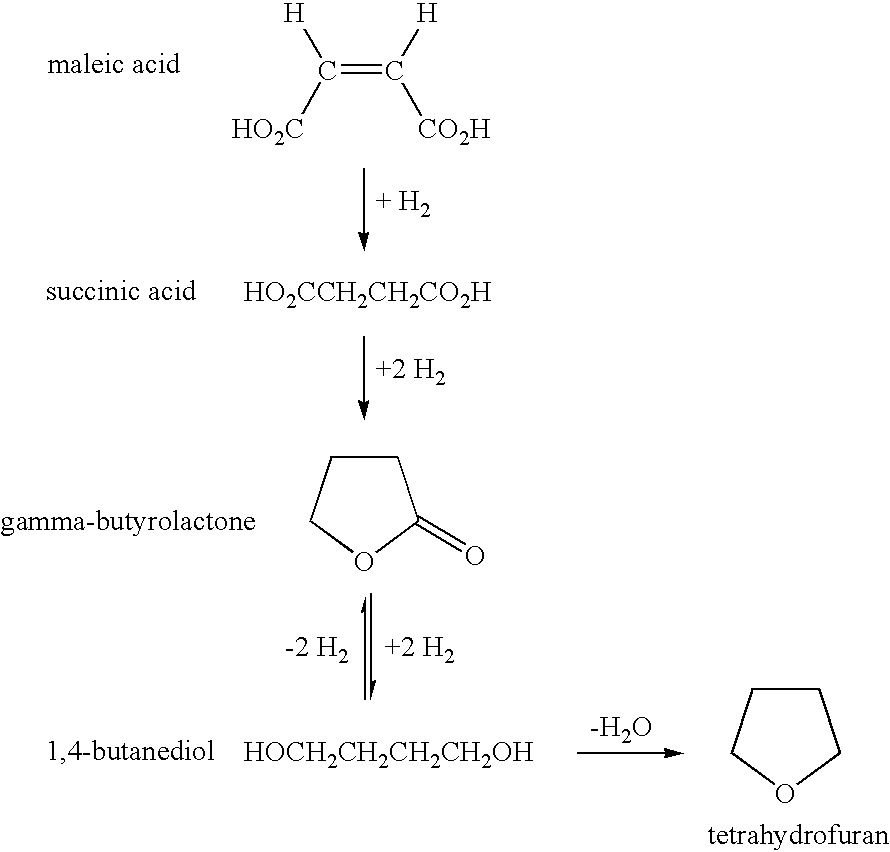Two-stage process for the hydrogenation of maleic acid to 1,4-butanediol
a hydrogenation process and maleic acid technology, applied in the field of process for hydrogenation of maleic acid to 1 . 4butanediol, can solve the problems of shortening the expected life of process equipment and observed extreme corrosion of maleic acid
- Summary
- Abstract
- Description
- Claims
- Application Information
AI Technical Summary
Benefits of technology
Problems solved by technology
Method used
Image
Examples
examples
[0042]Several tests were conducted in a 200 cc reactor containing 4%Pd / 4%Ag / 4%Re on carbon catalyst. Aqueous maleic acid solutions (22 and 44 w / v%) and vaporous hydrogen were fed to the reactors. Corrosion test rods of various metal compositions were placed inside the catalyst bed, including several Hastelloy alloys, titanium grade 7, Zirconium 7202 and 316L stainless steel. The reactors were operated at various temperatures to convert the feed materials to a reaction product comprising succinic acid, gamma-butyrolactone and / or 1,4-butanediol. It was noted that at higher temperature runs, evidence of corrosion existed on the test rods. An analysis of the test rods and data from the several runs (for example, comparing the reaction temperatures for the test runs with corrosion on the test rods versus test runs with no corrosion, and for the test runs with corrosion on the test rods comparing internal reactor temperature plots, i.e. temperature vs. bed height, to the location of the c...
PUM
| Property | Measurement | Unit |
|---|---|---|
| temperature | aaaaa | aaaaa |
| temperature | aaaaa | aaaaa |
| temperature | aaaaa | aaaaa |
Abstract
Description
Claims
Application Information
 Login to View More
Login to View More - R&D
- Intellectual Property
- Life Sciences
- Materials
- Tech Scout
- Unparalleled Data Quality
- Higher Quality Content
- 60% Fewer Hallucinations
Browse by: Latest US Patents, China's latest patents, Technical Efficacy Thesaurus, Application Domain, Technology Topic, Popular Technical Reports.
© 2025 PatSnap. All rights reserved.Legal|Privacy policy|Modern Slavery Act Transparency Statement|Sitemap|About US| Contact US: help@patsnap.com

